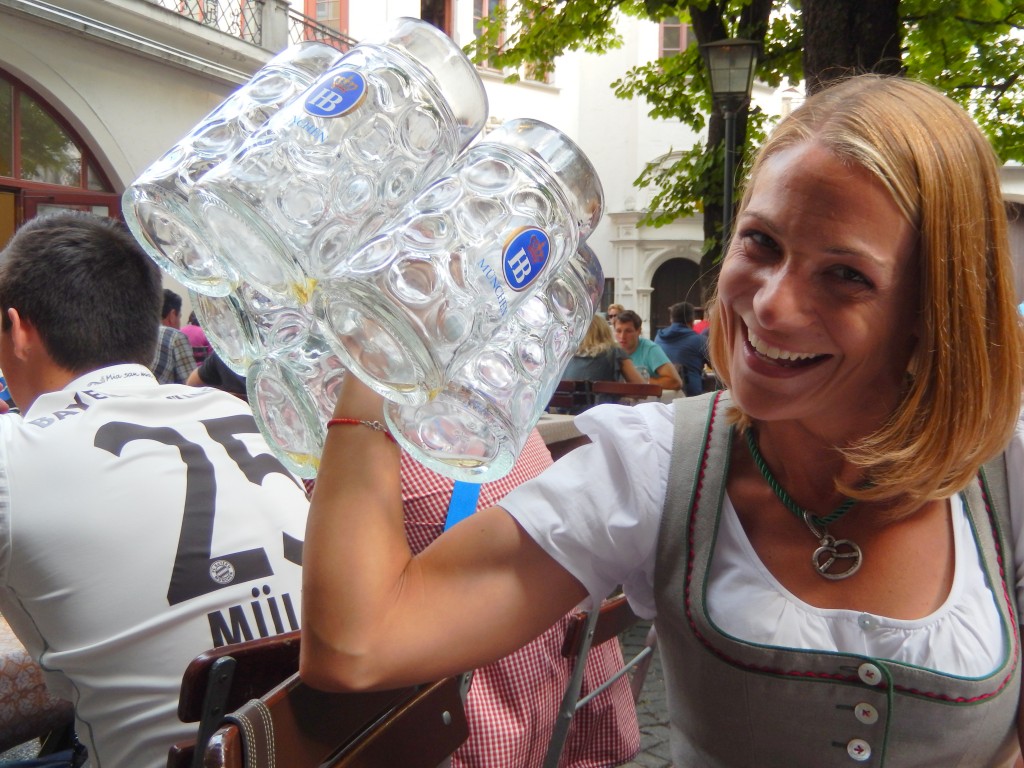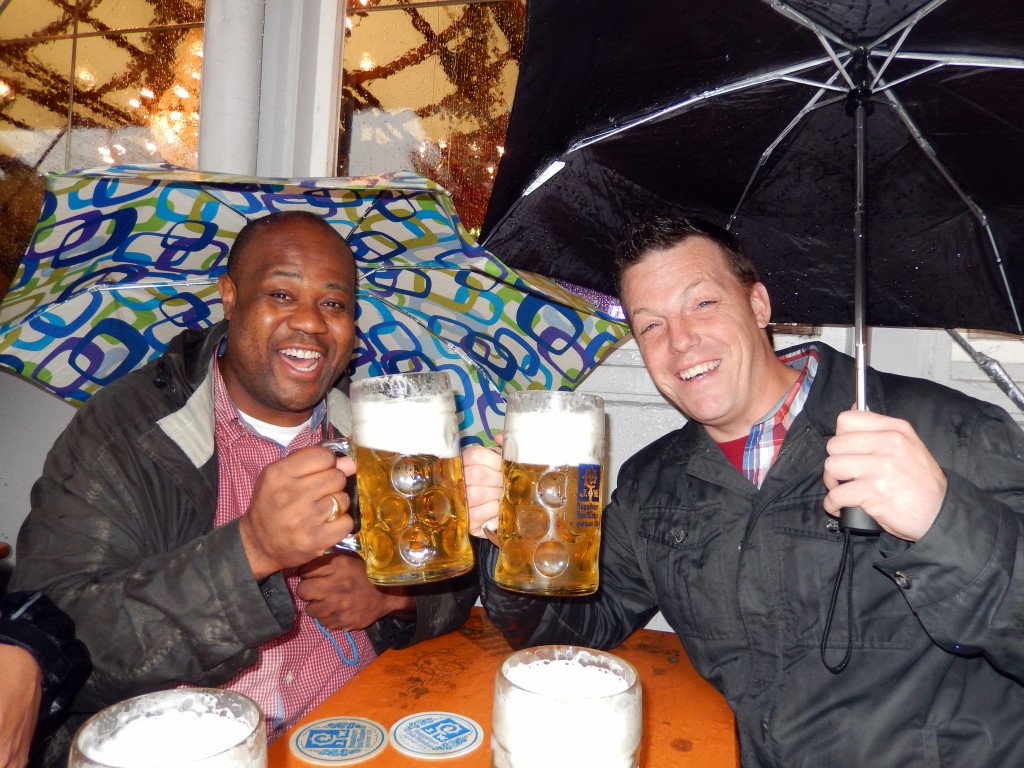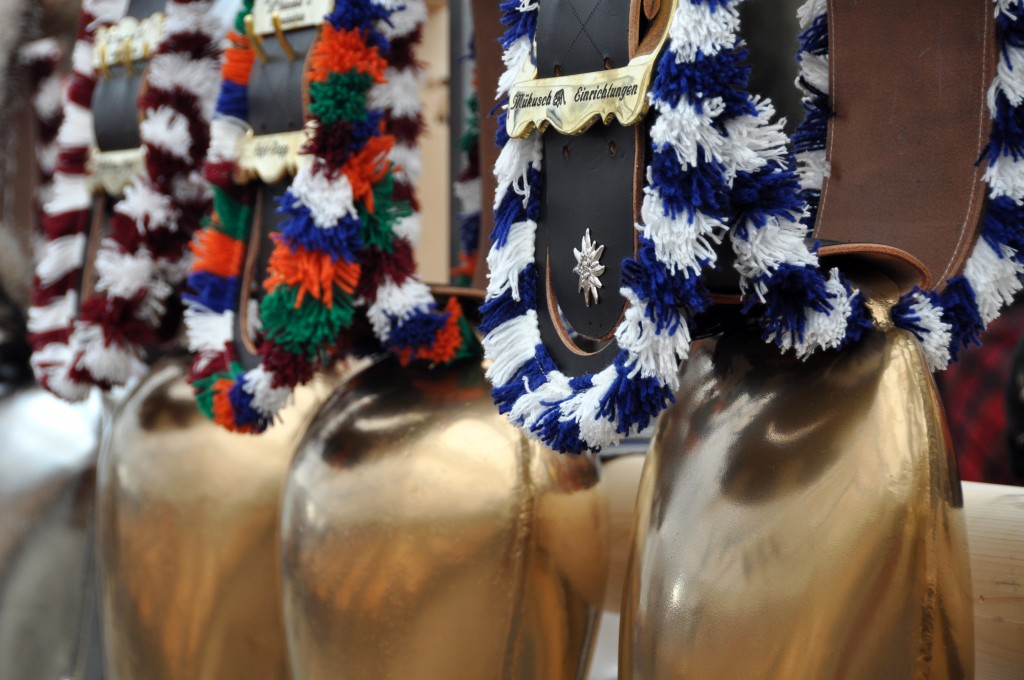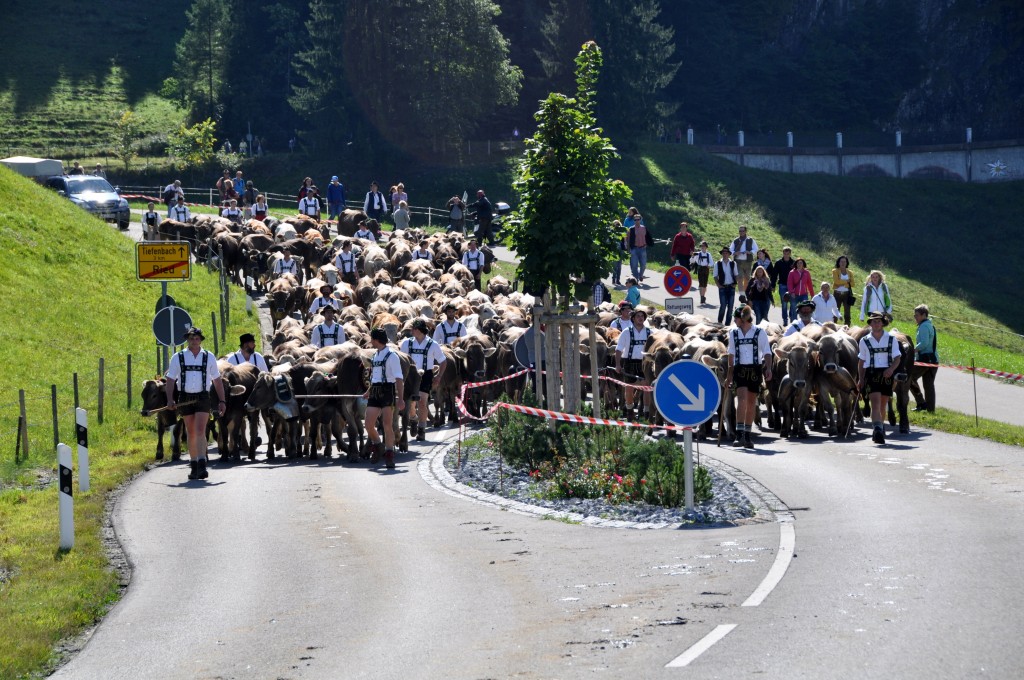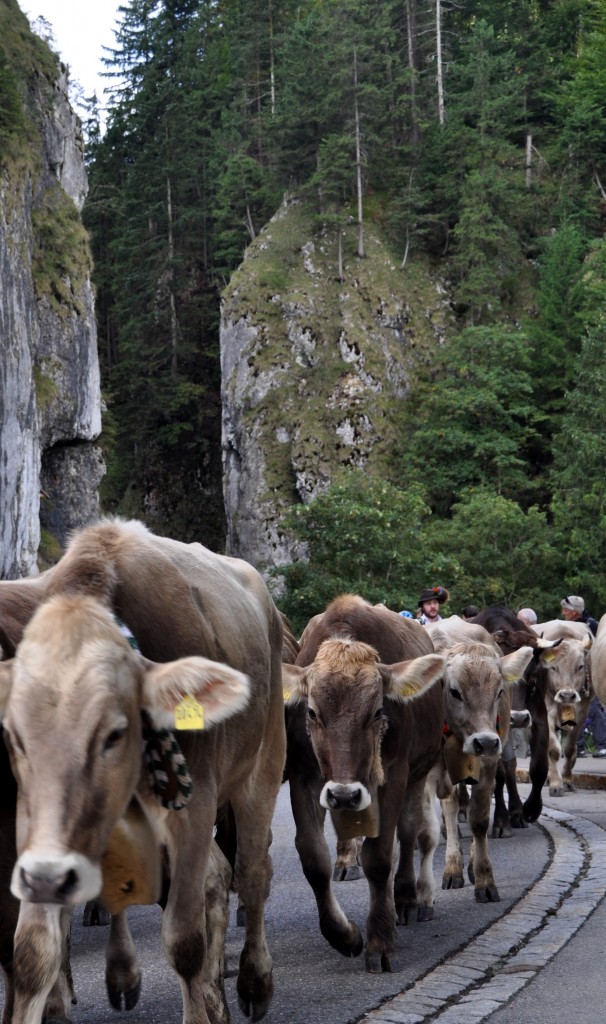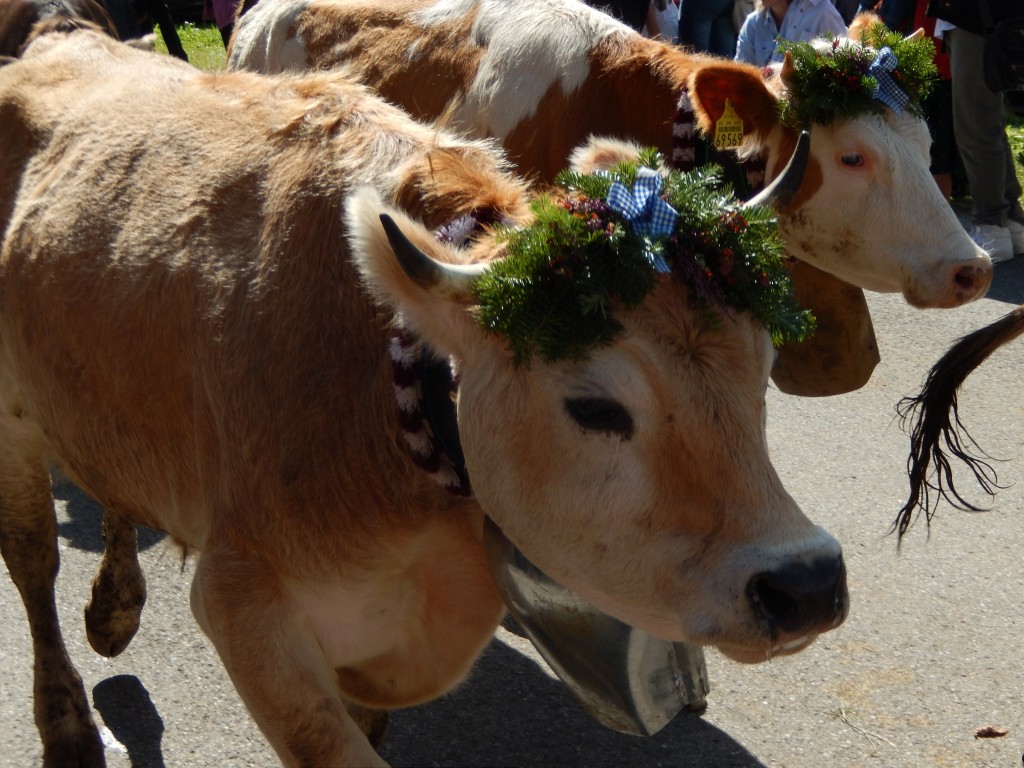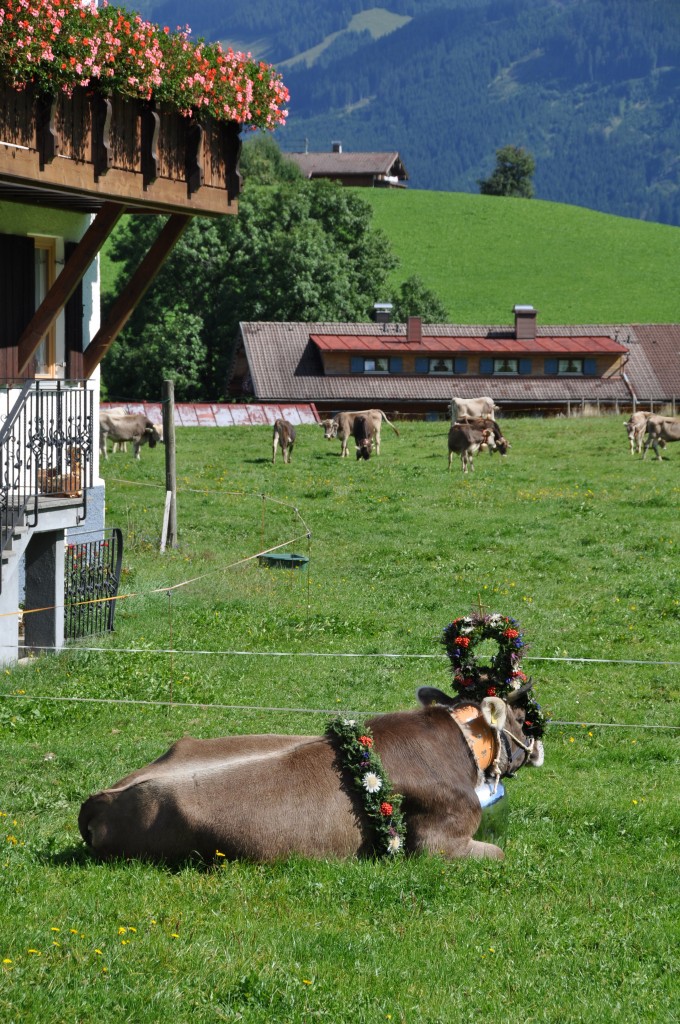While Joe was spending his time at the NATO School this week, I got to split time between my own work and the beautiful town of Oberammergau. Nestled in a valley of the Ammergauer Alps, Oberammergau earned a spot on our “favorite German towns” list. The town is quintessential Bavaria: every balcony and windowsill filled with beautiful flowers and a postcard-perfect view of the mountains in every direction. What also makes it also so beautiful are the Lüftmalerei…the paintings on the sides of buildings depicting biblical or fictional stories.
The Pilatushaus is the most famous, because it is covered in painted columns that appear 3D as you move around the building.
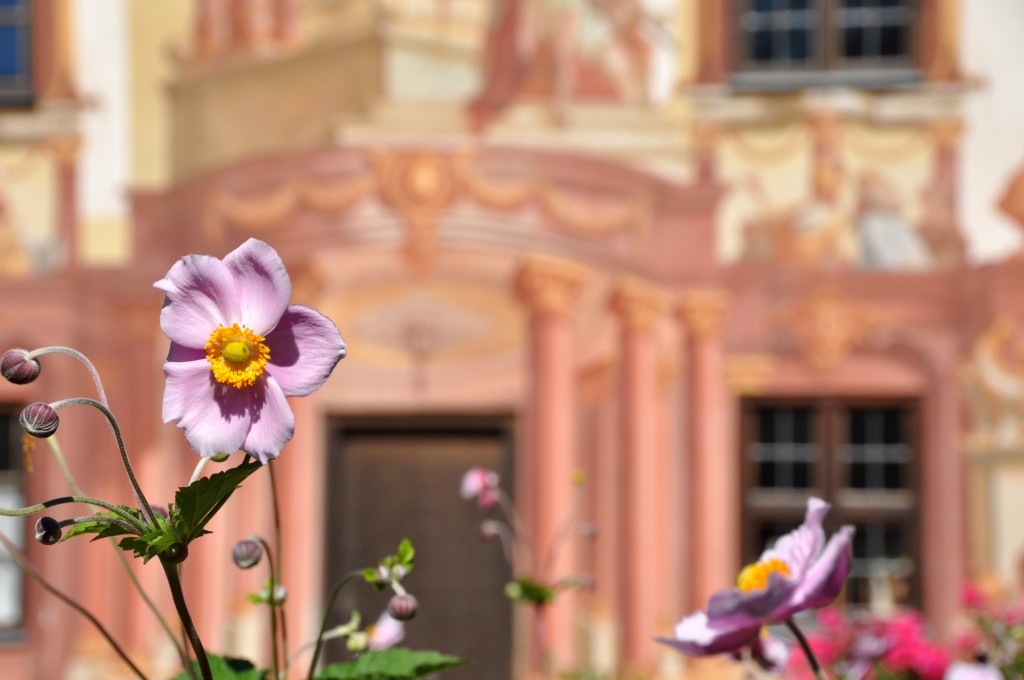
Flowers outside the Pilatushaus.
There are also several Fairy Tales depicted in the artwork.
Hansel & Gretel House:
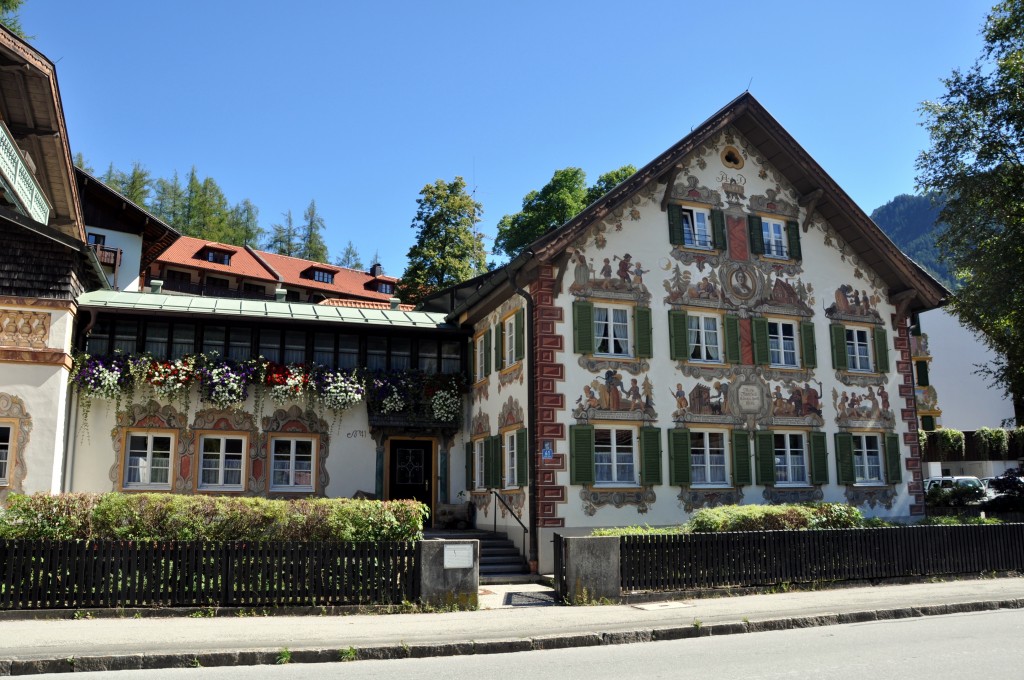
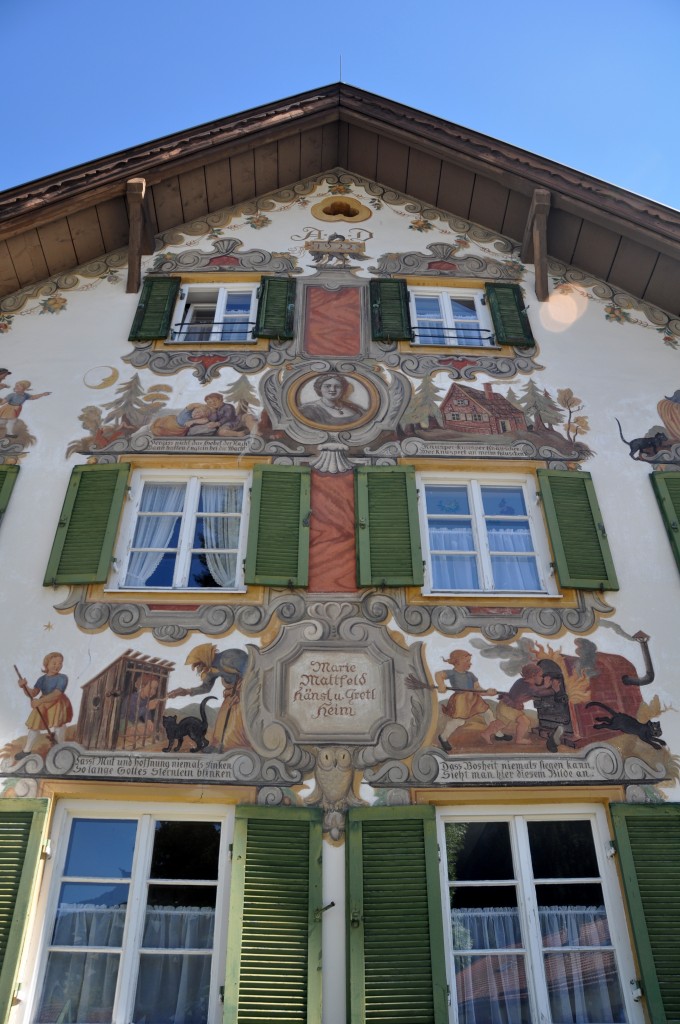
My favorite was das Rotkäppchenhaus (the Little Red Riding Hood House).
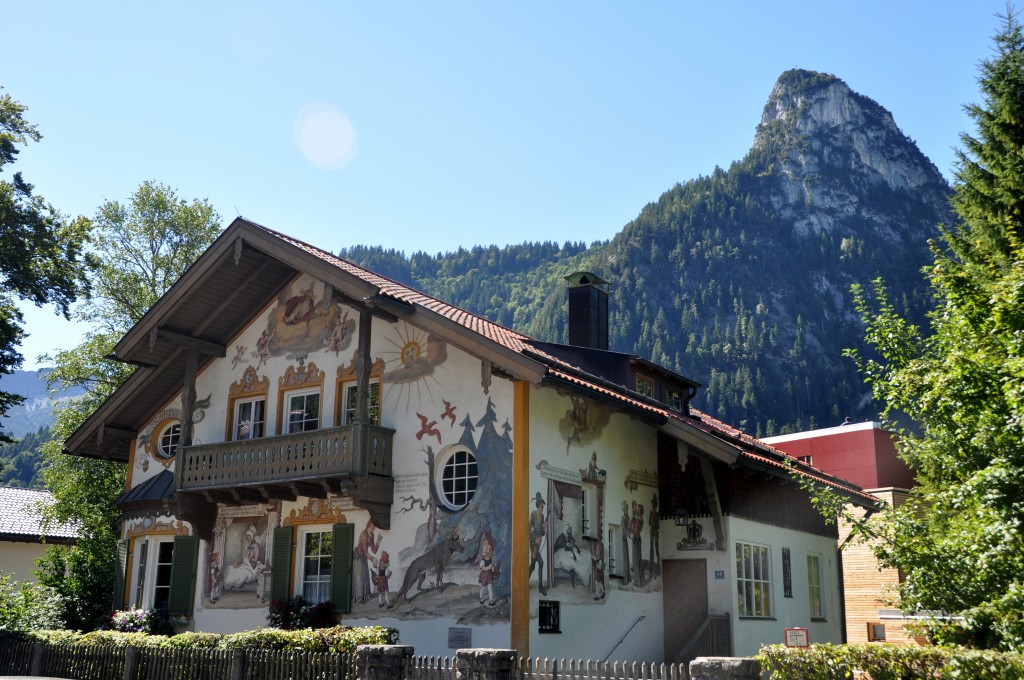
Oberammergau started making a name for itself in 1634 when the first Passion Play was performed as an offering of thanks to God for sparing the town from the Black Death. The play took place every year from 1634 to 1680, when it changed to the first year of each decade. Only “Oberammergauerers” are allowed to perform in the Passion Play. An actor must have been born, raised, or lived in Oberammergau for 20 years in order to be eligible. The Passionsspielhaus is an open-air theater that has been in use since the 1900s. During any year not ending in a zero, it is home to various plays and concerts from around the world.
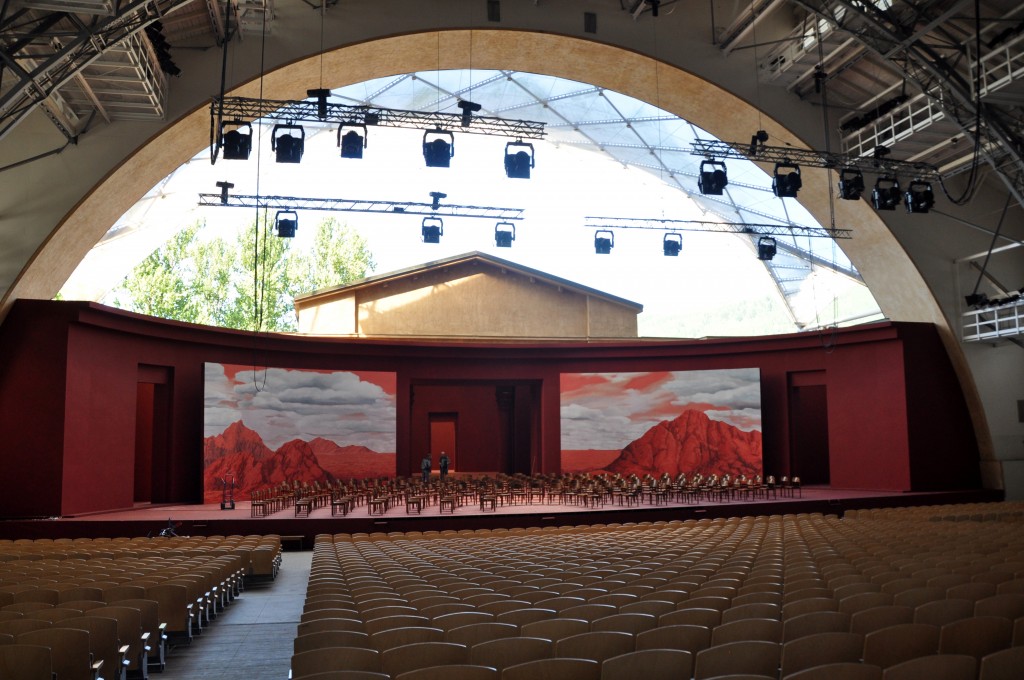
Spielhaus currently set for a performance of ‘Moses’
There are 150 roles in the Passion Play, 20 main roles which are occupied by two actors each. It takes a total of 2,300 people to carry out the production, all of which are Oberammergauers! The performance lasts 5.5 hours, with a three hour break in the middle for dinner and re-circulating blood in the legs. The Director is selected three years in advance and tickets go on sale two years in advance!
There are no microphones or wigs allowed in the production, so hopeful actors start warming up their voices and growing their locks on Ash Wednesday of the year prior to a “Passion year”. Two months later, they are notified of their roles. This gives each actor around 16 months to prepare, depending on the Christian calendar.
All of the 2,000 costumes are made in Oberammergau and seamstresses start working 1 year in advance. Only one prop is re-used each year, the table at which the Last Supper scene takes place. It is over 200 years old! Everything else is re-used and re-worked depending on the wishes of the director.

Costume of Pontius Pilate from 2010 on the left and Romans on the right. The hollow wooden cross is 18ft tall and 120 lbs.
The part of Jesus is obviously a very sought after role, and is the only one to have age requirements. Due to the very physical demands placed on the actor (he must carry the cross in the photo above alone and “hang” there for 30-45 minutes) and the need to look 30 something, the performer must be between 25 and 35 years old. Other actors have ranged from a few months to 94 years old!
The five month production season costs about 28 Million Euro and all profits go directly back into the town of Oberammergau. It seems to be a really special bonding event for the locals, as my tour guide became emotional when talking about how much the town and the people change between every production. She said that it is really hard work (all of the 2,300 people must keep their day jobs too!) but they all really love it. I thought it all was really, very interesting.
Liv and I also did some great hiking in the Alps! The weather was so perfect. We felt bad for Joe, who was sitting inside all day, but took advantage of it anyways. I love the Germans…they are so active and crazy about the outdoors. While I chose to ride the funicular up to the top and then hike down, I must have run into at least 15 Germans who were going the opposite way. This was no little hill, mind you. I guess when you do it every weekend, it isn’t that hard!
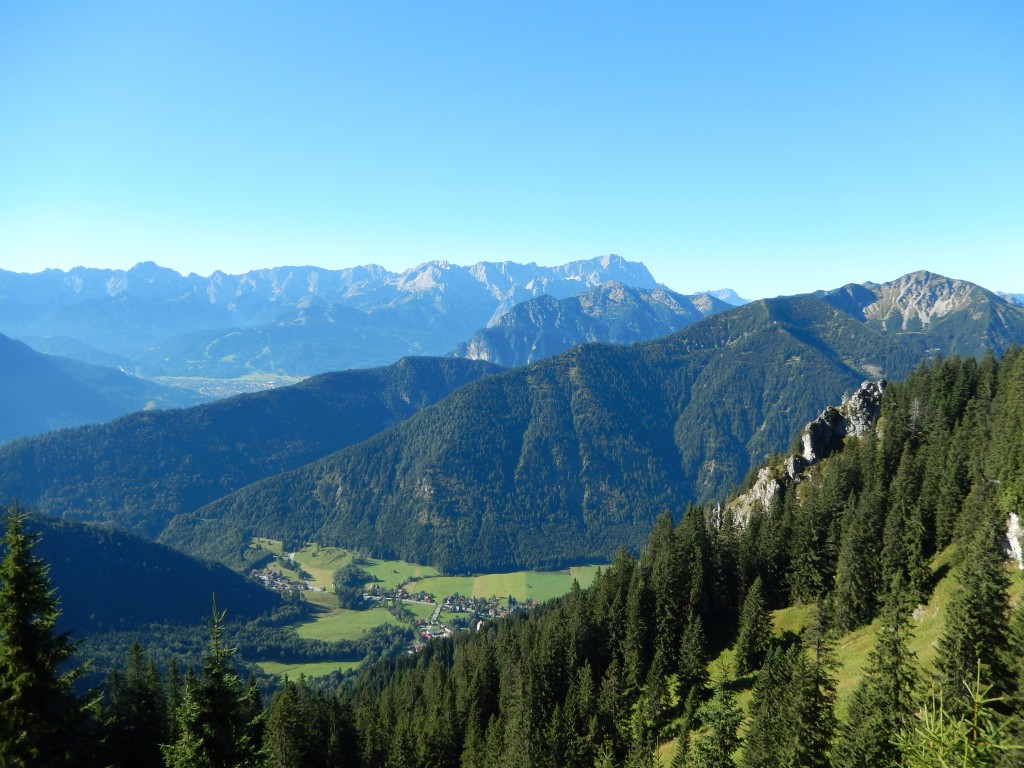
 There were feats of strength outside beer tents:
There were feats of strength outside beer tents: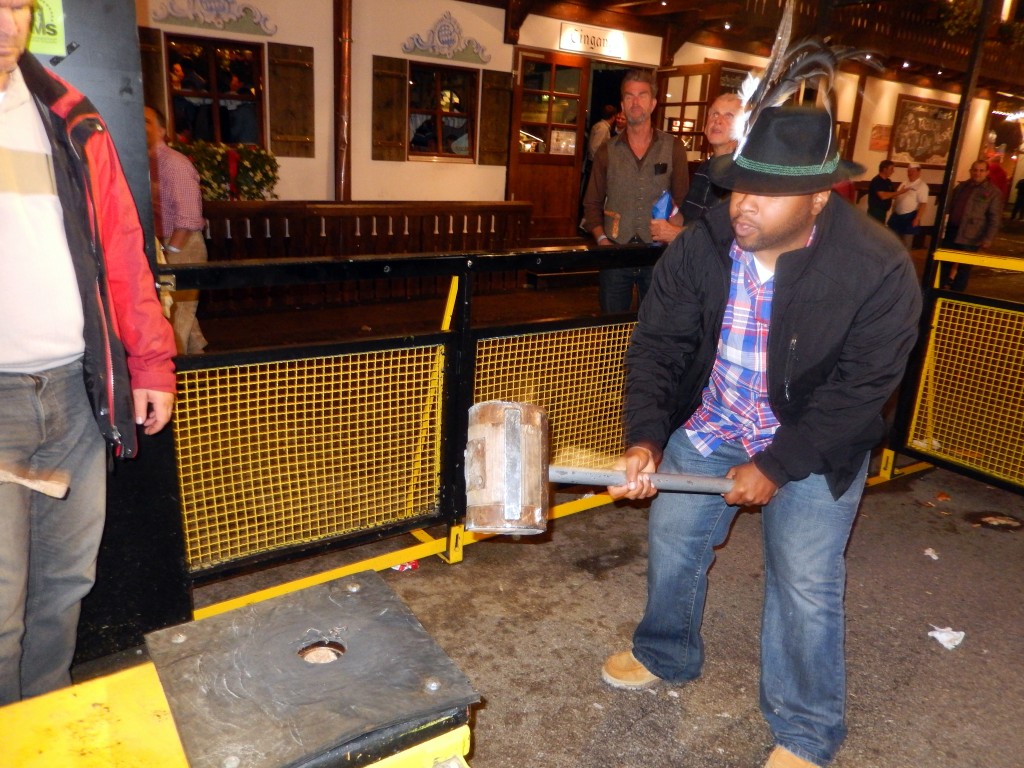 There were rainy days, inside and outside beer tents:
There were rainy days, inside and outside beer tents: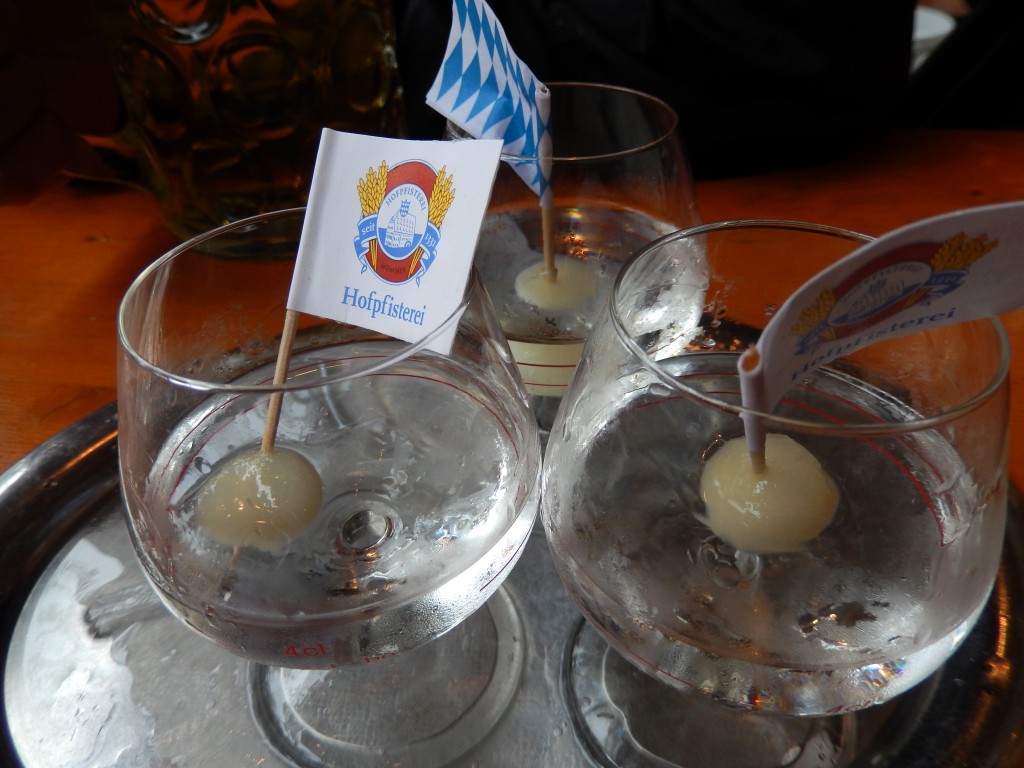 There were rounds of bumper cars, after a beer tent (which left six adults grinning like little kids):
There were rounds of bumper cars, after a beer tent (which left six adults grinning like little kids):



